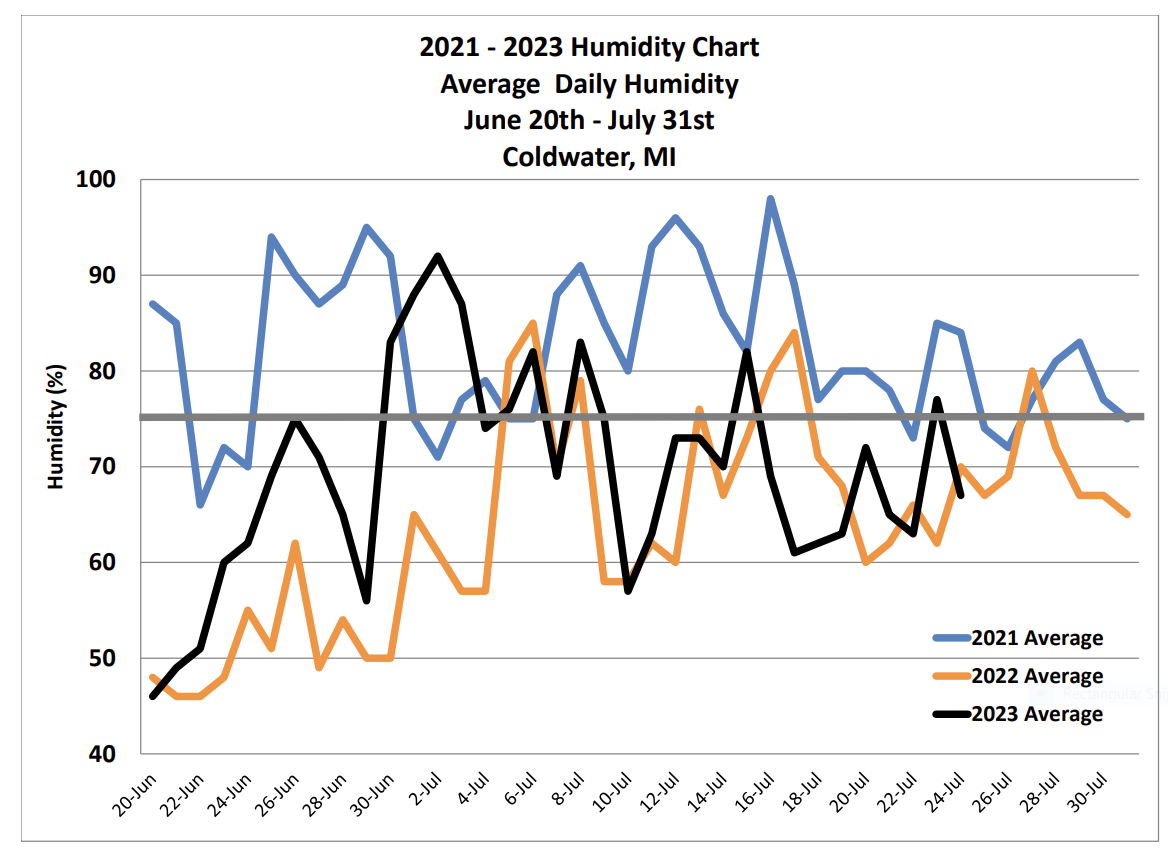High Humidity a Contributing Factor in Tar Spot Outbreaks
Humidity Impacts Tar Spot? Missy Bauer Explains
A combination of high humidity, rainfall and fog delivered a tar spot gut punch to corn crops in many south-central Michigan fields in 2021.
“We knew it could hit crops and easily take out 50 bushels an acre, but to watch it physically kill a crop in like a three-week timeframe, that made me step back. I was like, ‘Oh, my goodness, this is bad,’” recalls Missy Bauer, Farm Journal Associate Field Agronomist and owner of B&M Crop Consulting, Coldwater, Mich.
This spring, Bauer had braced herself for a potential tar spot repeat. She expected to see it again because of resident disease inoculum present in those fields that farmers rotated out of soybeans and planted to corn. The inoculum would have contributed in essence to homegrown tar spot.
But, so far, the disease has shown up with mainly low levels of severity because of the drought that has plagued much of the Corn Belt.
To date, farmers in roughly half a dozen states have reported finding tar spot in their fields this season, according to ipmPIPE. See a map of the approximate locations here.
IpmPIPE is a pest mapping and forecasting system developed by the National Institute for Food and Agriculture (NIFA) and its land-grant Extension partners, along with Animal Plant Health Inspection Service and Risk Management Agency.
One Silver Lining For Drought
Shawn Conley, soybean Extension specialist at the University of Wisconsin-Madison, says for tar spot to develop it requires moisture, which has been in short supply in many areas.
“Yes, precipitation is helpful, but more importantly, we need intermittent wet/dry cycles to give us intermittent leaf wetness. Specifically leaf wetness at night,” says Conley in an online article, What Should I do About Tar Spot?
Adds Conley: “What gives leaf wetness this time of year other than rain? That would be high dew points and humidity.”
Bauer notes that “Universities have found when average daily humidity is above 75%, crops are at risk."
Purdue University reported in June 2022 that Tar spot pressure in corn is fueled by:
• Cool conditions (60-70 degrees F)
• Humid conditions (>75% relative humidity)
• Prolonged leaf wetness (>7 hours)
Bauer says weather data, particularly tracking humidity levels, is a big part of how she is keeping an eye on the disease this season. She offers some recommendations in the brief, 2-minute video (posted above) on how to use humidity charts like this one to track the potential for your corn crop to develop tar spot.
Conley adds that apps can also help farmers in the process. Tarspotter and Field Prophet are both Smartphone applications that can help you determine if the weather has been conducive to put your corn crop at high risk of tar spot development.
Along with that, Conley advises farmers to have tools in place ready to deal with tar spot. “It’s here to stay and we need to simply be prepared and ready to fight the disease,” he says.
Tarspotter App Could Help Shield Corn from a Tar Spot Invasion
Homegrown Tar Spot Is Showing Up Now Thanks To Inoculant From 2021








